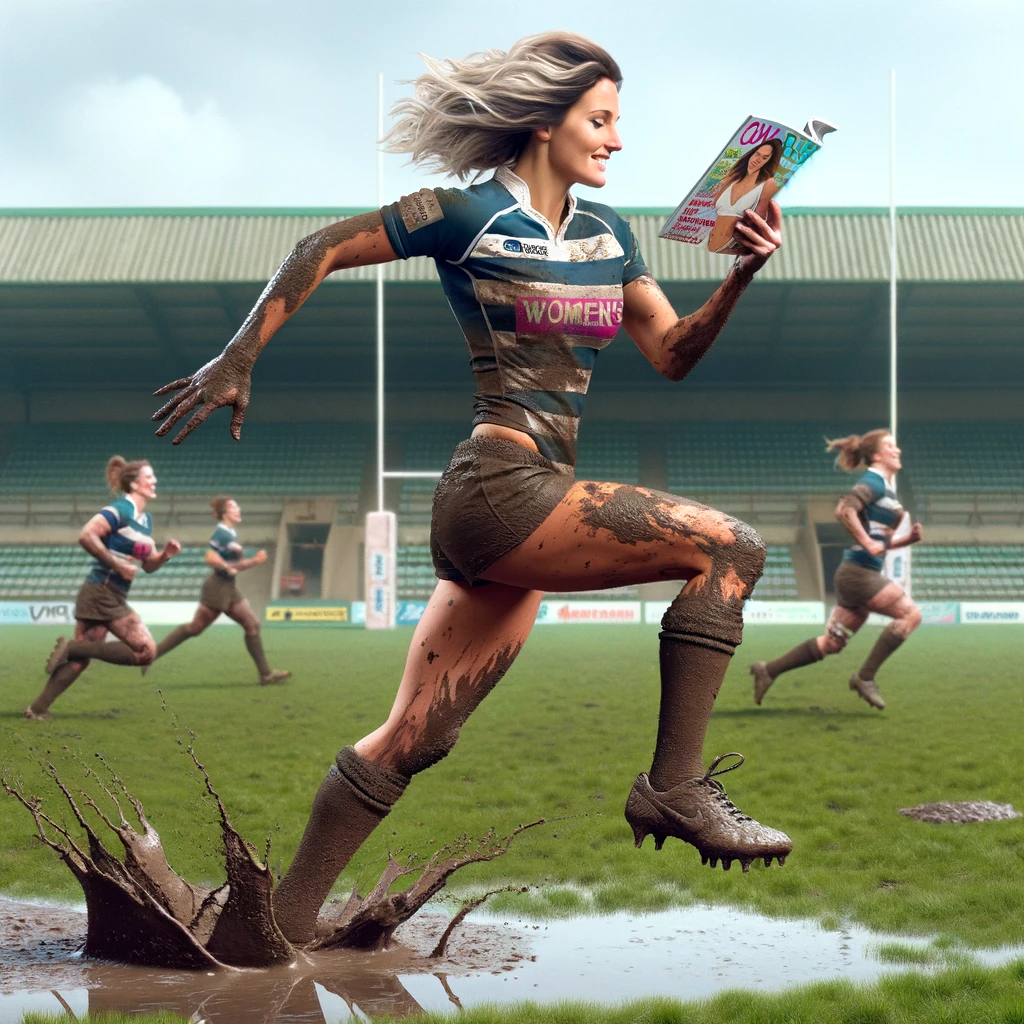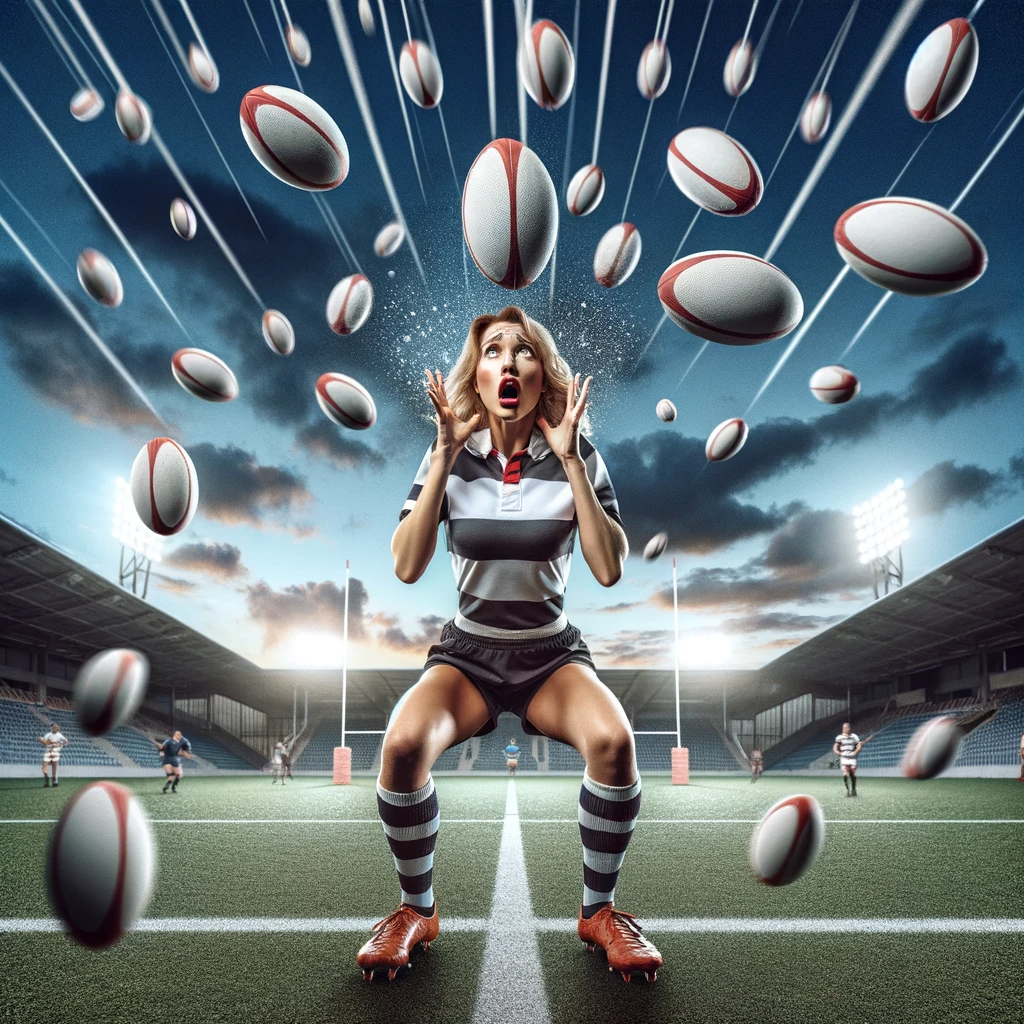Which Rugby Position Should You Play?
If you have a GQ subscription, an aversion to contact, and the ability to run around a muddy puddle, then you’re in a prime position to be a winger.
What makes the game of rugby union so great is that it’s a game for everybody and every body. Whether you’re short or tall, fat or skinny, slow or fast, the diversity of skillsets and physical attributes needed for a team means that there’s a place on the team sheet for you.
Naturally, there are many positions more suited to total beginners than others. First-time players will typically be put on the wing rather than in the complexity and technicality of the scrum, for example. However, you may find that your particular skillset or body type makes you more able for one particular part of the team.
This is obviously not a rule set in stone, just take a look at Shane Williams and the great Jonah Lomu - both incredible wingers that are physically worlds apart.
But they are the exception to the rule. All in all, stereotypes stick around for each playing position. So, which rugby position suits you most?
limited edition W RUGBY x LooseHeadz rugby ball
Prop (Numbers 1, 3)
How much do you bench? How many pints can you drink? How much do you get through at a Chinese buffet? If the answers to these questions are respectively “five plates, five dozen, five plates” then life as a prop could be the life for you.
Props “prop up” the hooker in the scrum and given the girth of most hookers, that’s no mean feat. This, coupled with the whole “pushing against the opposition scrum” thing, means that props tend to be the strongest players on the pitch.
In the loose (AKA in open play), props are used to make powerful runs through opposition defensive lines – often literally through the players – and are potent hitters in defence. The tighthead prop is one of the most specialised players in a team, needing to battle in the scrum against both the opposition hooker and loosehead prop.
You should be a prop if: you’re big and strong, not too tall, and willing to hit and get hit.
Hooker (Number 2)
Do you need to buy special shirts with extra-large collars? Do you have no particular desire to preserve the health of your shoulders and the aesthetics of your ears? If both apply to you, and you’re a dab hand at darts, it’s time to play hooker.
It’s the position name that’s easiest to make fun of, but it’s one of the more specialist and well-paid roles in professional rugby. So it’s more like being a high-class escort than a hooker, really.
Hookers are named for their responsibility to “hook” the ball with their foot to win possession in a scrum. Like props, hookers are big strong units but tend to be more mobile and put in a bit more of a shift in open play. They score the most tries of any forward, usually because they get to piggyback onto the back of a driving maul after they throw in and can simply fall over on top of the ball.
You should be a hooker if: you’re a sturdy unit and want to get involved in rucks and collisions.
Lock/Second Row (Numbers 4, 5)
How’s the weather up there? If this isn’t the first time you’ve been asked that question today, and especially if you’re a bit too slow to understand that it’s a joke about you being tall, then you’re a lock.
The locks make up the second row, and their job is best described as grunt work, the engine room. Their most obvious contributions to a match are as lineout jumpers and the leading cause of upward camera pans during the national anthem.
Besides the obvious, though, these lanky streaks do a lot of unseen work. They’re making metres with crash ball carries, disrupting rucks and mauls with what is known as (in very technical rugby terms) “shithousery”, and generally putting in a lot of work to get all over the pitch and make the opposition’s life hell.
You should be a lock if: you’re tall, you don’t mind a hit, and you’ve got a good workrate.
Back Row (Numbers 6, 7, 8)
Do you fantasize about smashing people in rucks instead of scoring tries? Do you enjoy playing practical jokes and generally being an absolute pest? Well then, you’re an absolute flanker.
When you read that bit about locks putting in a lot of work to make a nuisance of themselves, did your eyes light up? If that appeals but you have a shorter inseam, then the back row is the place to be. In the modern game, second rowers and back rowers tend to perform similar roles in open play: crash balls, rucking, jackling, but with a pinch of extra shithousery over the locks.
The number 8 has further responsibilities in coordinating the exit from the scrum and tends to be bigger than his back row colleagues, but essentially the flankers and 8 can all be classed as general workhorses.
You should be a back row if: you’ve got the engine to get involved in every ruck.
INCREDIBLE ON AND OFF THE PITCH
When you buy a W RUGBY ball, we donate another into grassroots rugby, Won for Won
Scrum Half/Half Back (Number 9)
Are you short and irritating? Have you ever been compared to Joe Pesci in Casino? If so, the nine jersey could be right up your street. Don’t worry, it comes in size XS.
Yappy little dogs in human form, the scrumhalf is the tactical link between the forwards and the backs. An essential part of coordinating attacks, the number nine has to be a good communicator, precision passer of the ball, and be fast and agile enough to reach rucks and retrieve the ball quickly.
In defence, the nine often plays behind the line to cover against opposition kicks and does their best to disrupt their opposite number at the scrum. Also, they should be prepared to put in a lot of box kicks to get their team out of trouble!
You should be a scrumhalf if: you can get around quick and thread the ball through the eye of a needle.
Fly Half/Outside Half/First Five-Eighth (Number 10)
Let’s say that you can kick a penalty ten metres for every hair product you use: would you boot the ball further than Morné Steyn? Does the sun literally shine out of your arse, and that’s how you’ve got such a solid year-round tan? Time to play as a number 10.
Big boots and bigger egos are the key ingredients for a fly-half. Working with the scrum half, the number 10 is the leader of the backs and often the key tactician in the team. Typically the team’s best kicker, both in open play and off the tee, it’s essential that fly-halves have cool heads and strategic vision.
I know it sounds like a fly half wrote that paragraph*, but it’s honestly a very important role. There’s a reason that teams play “off 9” or “off 10” and it’s because these two players are the masterminds of a team’s attack.
You should be a fly-half if: you’ve got a good rugby brain, good hands and a good boot.
Winger (Numbers 11, 14)
If you have a GQ subscription, an aversion to contact, and the ability to run fast enough to escape the splatters of a muddy puddle, then you’re in a prime position to be the man or woman who does nothing all game but catch a ball (sometimes), score a try or two, and scoop the Player of the Match award.
The stereotype about wingers is that they hang out away from the action, only coming in to finish off a gloriously-executed full team strategy by dotting down a walk in try in the corner – or, more often at the amateur level, knocking on immediately.
The stereotype about wingers is that they hang out away from the action. Statistically, they do have the least carries and fewest tackles of any player in a team, but their role as speed merchants and finishers in attack is vital – there’s a reason that Jonah Lomu and Portia Woodman were stars of the 1995 and 2021 Rugby World Cups respectively.
You should be a winger if: you’re very fast (or big enough to run through tackles) and can catch a ball.
Centre (Numbers 12, 13)
Are you a big tough unit, or are you a speedy little whippet? Do you relish smashing opponents back behind the gain line, or do you prefer to use your slick hands and dazzling steps to evade them? Either way, welcome to the midfield.
While centres can be similar player types, these days it’s fashionable to have a big, strong unit wearing one of the centre jerseys and a playmaker with good hands in the other. Think of Holly Aitchison’s flair complementing Emily Scarratt’s power runs, or the Farrell-Tuilagi axis that serves England so well on the rare occasion that the latter is uninjured.
Centres need to be able to catch, pass, and run quality lines to break through the opposition defence. It doesn’t hurt if they’ve got a solid kicking game either. In defence, they tend to be big, hard tacklers and ideally should wrap their arms a little more than Owen Farrell does.
You should be a centre if: you’re happy to take hits, give hits, and can pass a ball quickly and accurately.
Full Back (Number 15)
Can you catch? Can you kick? No? Oh… well, are you willing to try? Great, you’re a full-back. Good luck tackling that opposition centre. It should be easy; they’re knackered from flattening your fly half and trampling over your wing.
It’s funny that wingers get all the stick for staying away from the action when a full back’s job description is almost literally that. The full-back stays behind the defensive line to deal with opposition kicks and serve as the last line of defence against breaks.
In attack, they tend to have great kicking and the ability to spark quick counterattacks from deep. The most important skill of the full back is the ability to compete for the ball in the air and catch high kicks. It’s not a job for butterfingers.
You should be a full back if: you’ve got a solid pair of hands, a big boot, and you can cover ground quickly.
Words // Matt Perry










